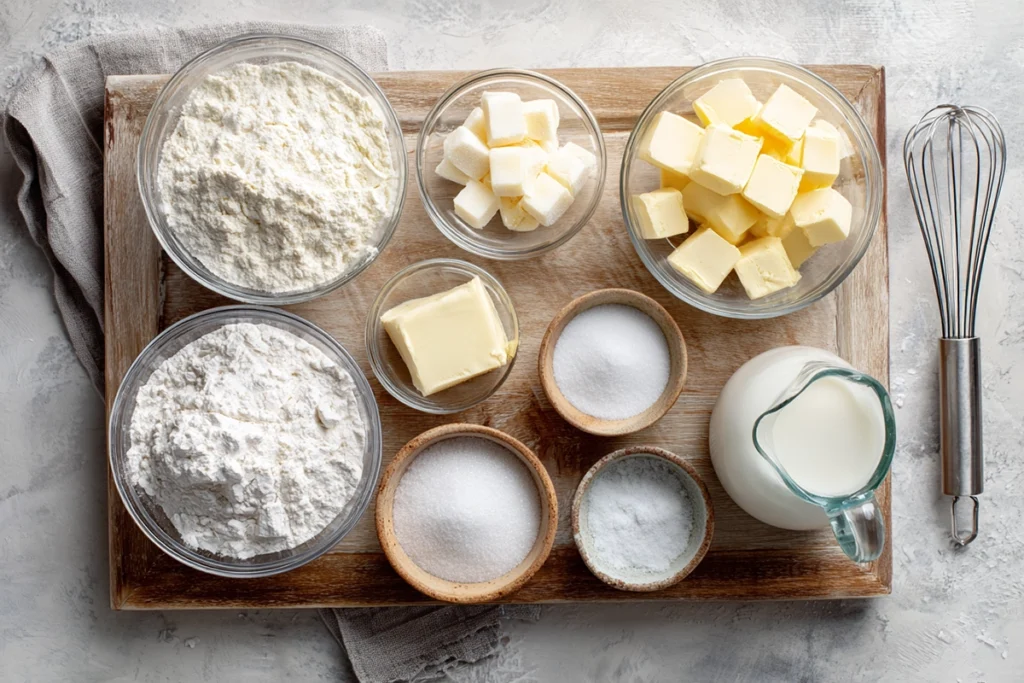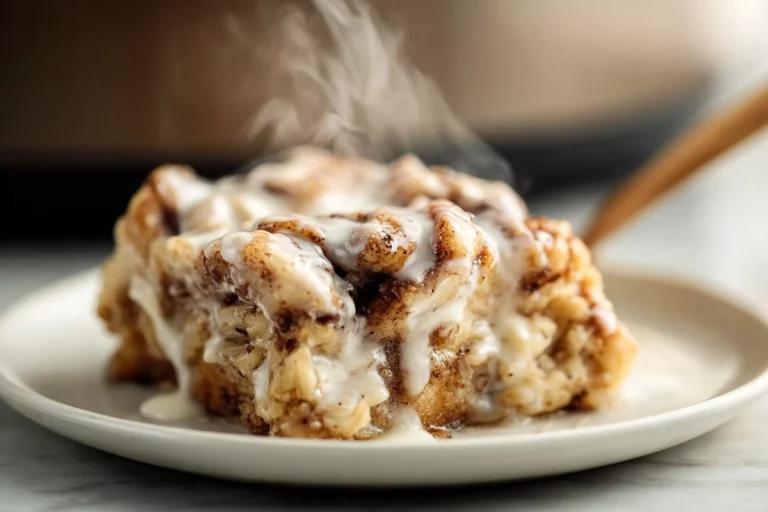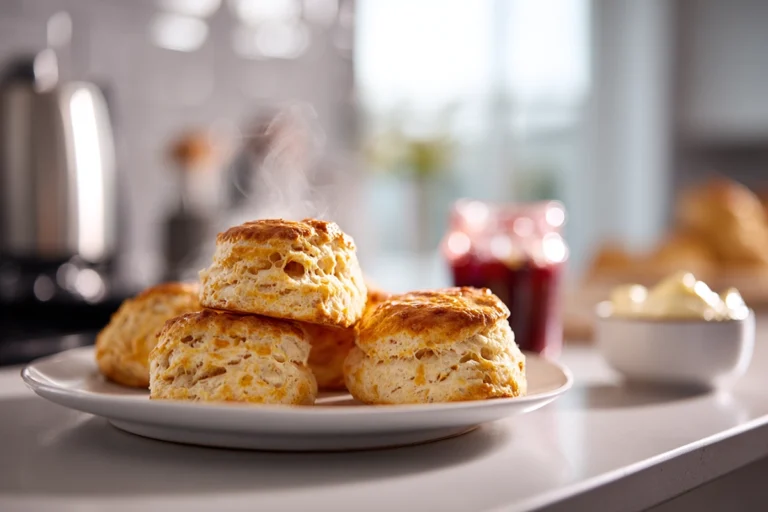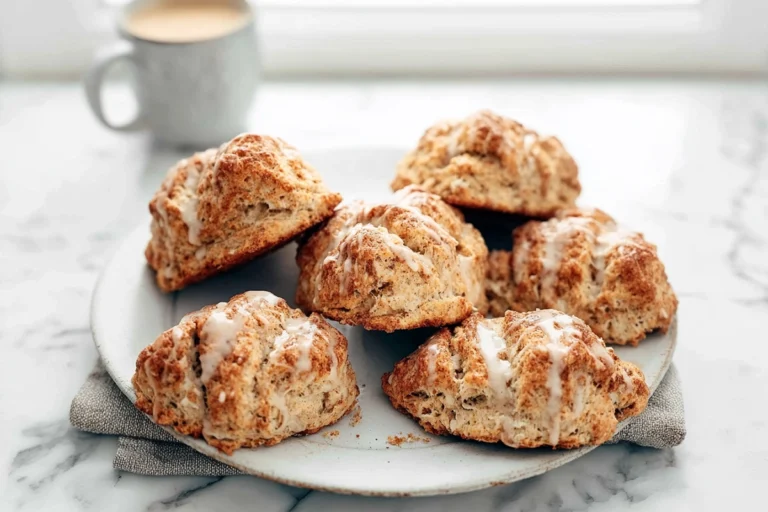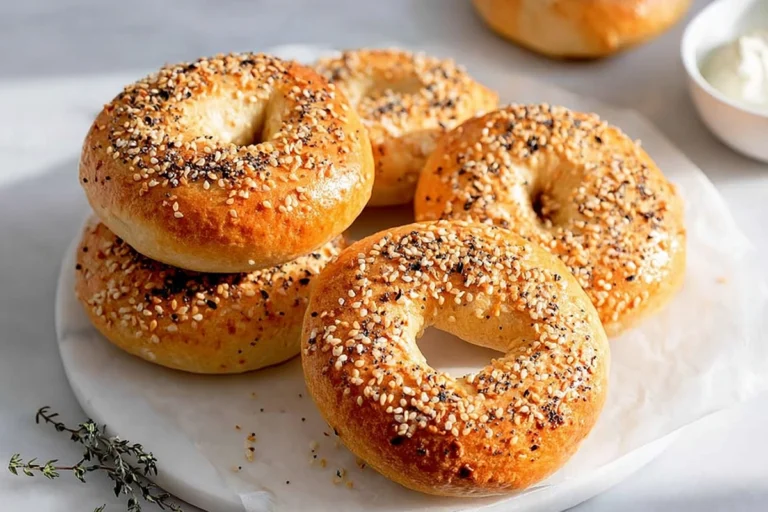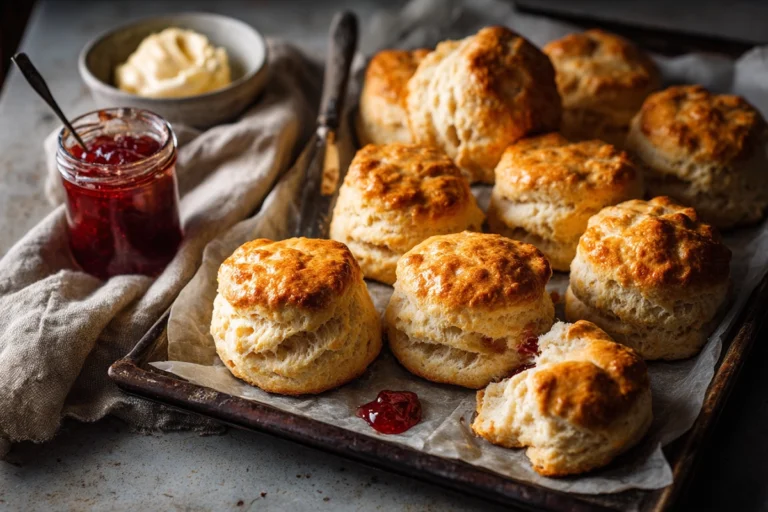Fluffy, Buttery Scones: The Only Scone Recipe You’ll Ever Need
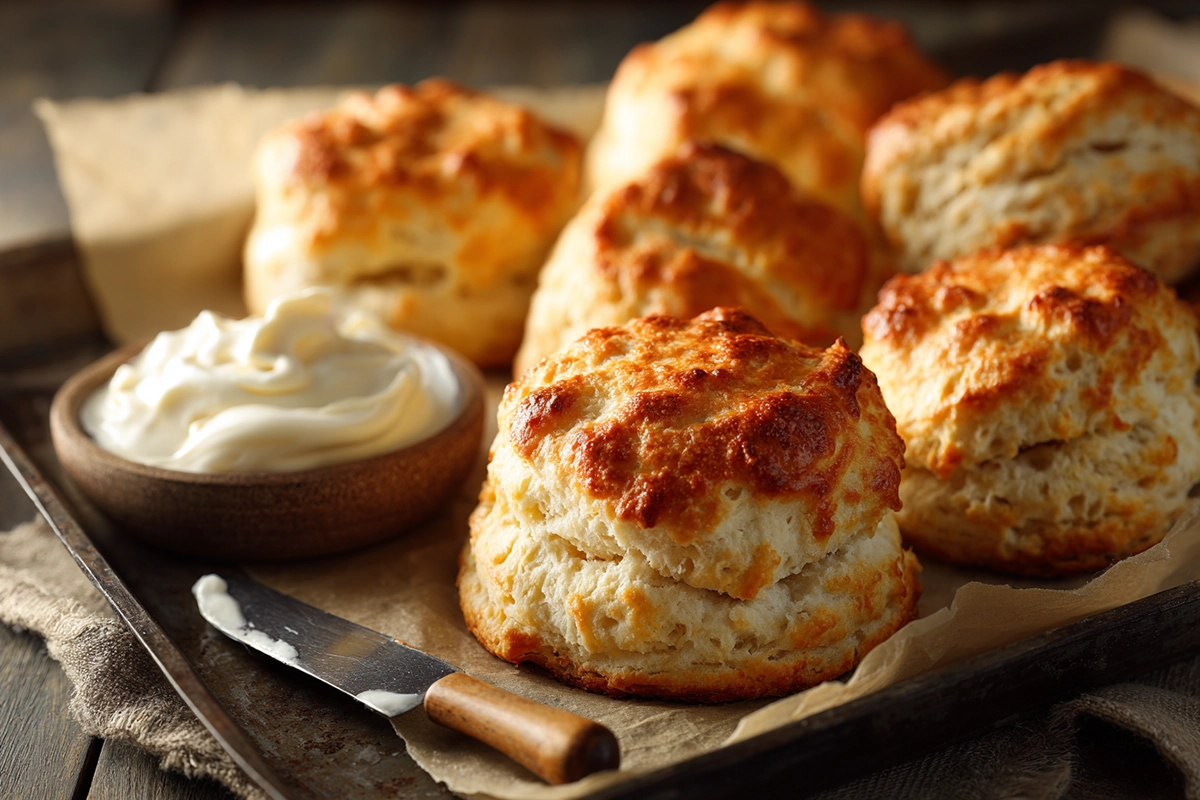
While both are called scones, the British and American versions couldn’t be more different. In the UK, scones are a key part of afternoon tea—lightly sweet, tender, and typically served with clotted cream and jam. In the U.S., they’ve taken on a richer, denser form, often loaded with add-ins like chocolate chips or blueberries and topped with a sugary glaze.
| Feature | British Scones | American Scones |
|---|---|---|
| Texture | Light, fluffy, crumbly | Dense, buttery, often cakier |
| Sweetness | Mildly sweet | Sweeter, especially with glaze |
| Add-ins | Rare (usually plain or raisin) | Common (chocolate, fruit, etc.) |
| Serving Style | With clotted cream and jam | Eaten plain or with glaze |
| Shape | Typically round | Often triangle-shaped |
If you’ve only tried store-bought ones, making them from scratch will change your perspective forever.
Essential Ingredients for Classic Scones
Before we dive into the technique, let’s break down the ingredients that make or break a perfect scone:
| Ingredient | Role in the Recipe |
|---|---|
| All-purpose flour | Provides structure and body |
| Cold butter | Creates flaky layers by steaming as it melts |
| Baking powder | Leavening agent for rise |
| Sugar | Adds sweetness without overpowering |
| Salt | Enhances flavor |
| Heavy cream / Buttermilk | Adds moisture and richness |
| Egg (optional) | Helps with texture and browning |
| Add-ins | Flavor variety (fruits, chocolate, cheese) |
For tools, a pastry cutter or two forks can help cut the butter into the flour, but a food processor works well too. (Link to a high-quality pastry cutter from Amazon)
Step-by-Step Instructions: How to Make Perfect Scones at Home
The secret to a flaky, melt-in-your-mouth scone lies in your technique. Here’s the process broken down:
1. Prep and Chill
- Preheat your oven to 400°F (200°C).
- Line a baking sheet with parchment paper.
- Chill your butter and wet ingredients for at least 15 minutes.
2. Mix Dry Ingredients
In a large bowl, whisk together:
- 2 cups all-purpose flour
- 1/4 cup sugar
- 1 tbsp baking powder
- 1/2 tsp salt
3. Cut in Butter
Add 1/2 cup cold, cubed butter and use a pastry cutter or your hands to break it into pea-sized pieces.
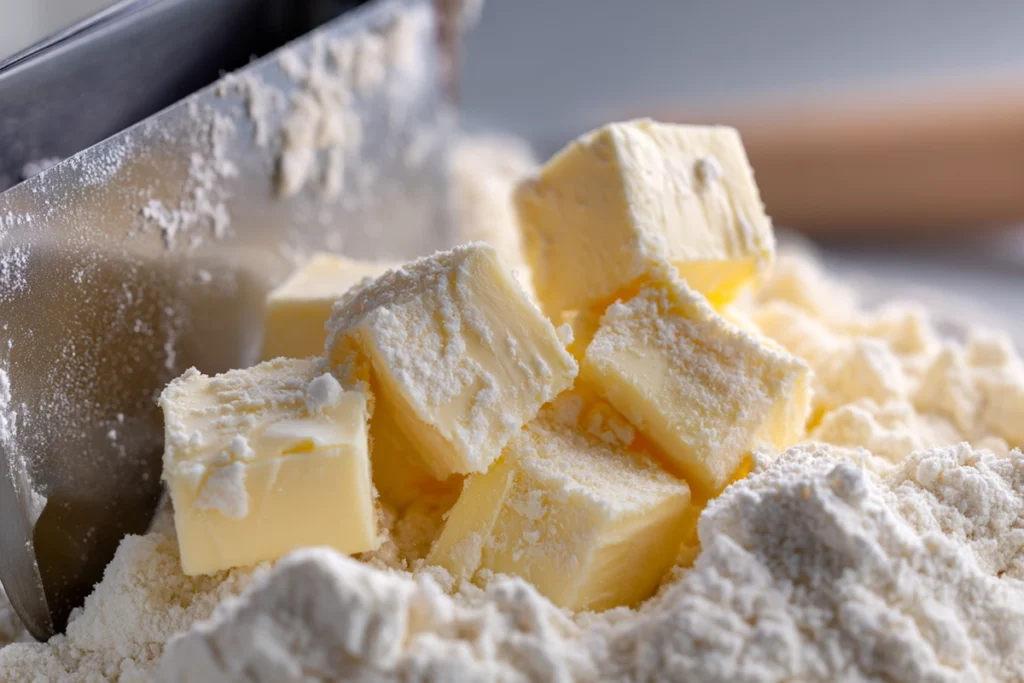
4. Add Wet Ingredients
Stir in:
- 3/4 cup cold buttermilk or heavy cream
- 1 tsp vanilla extract
Mix just until a shaggy dough forms.
5. Fold and Shape
Turn the dough onto a floured surface. Fold it over 2–3 times to build layers. Pat into a 1-inch-thick circle and cut into eight wedges.
6. Bake
Place the prepared sheet on a baking tray, brush with cream, and sprinkle with coarse sugar.
Bake for 18–22 minutes, or until golden brown.
Let them cool slightly before serving.
Pro Tips for Extra-Flaky, Bakery-Style Scones
Want your scones to rise high and flake like croissants? Follow these expert tips:
- Use very cold butter – Chill after cutting to keep the butter solid until baking.
- Don’t overmix – Stop mixing once the dough comes together.
- Chill before baking – 10–15 minutes in the fridge helps maintain structure.
- Fold, don’t knead – Folding layers into the dough improves flakiness.
- Use heavy cream – It creates richness and a soft crumb.
Common Mistakes to Avoid When Making Scones
Even experienced bakers stumble on these pitfalls:
- Overworking the dough makes scones tough.
- Skipping chilling results in butter melting too early.
- Not using enough leavening leads to flat, dense scones.
- Incorrect measuring can throw off the flour-to-fat ratio.
- Crowding on the baking tray prevents proper rise and browning.
Sweet vs. Savory: Easy Scone Variations to Try
Once you’ve mastered the basic recipe, try switching things up:
Sweet Ideas
- Blueberry lemon
- Cranberry orange
- Chocolate chip
- Vanilla bean with glaze
Savory Ideas
- Cheddar chive
- Bacon and gruyère
- Jalapeño corn
- Spinach and feta
These variations make scones a versatile addition to snacks or meals.
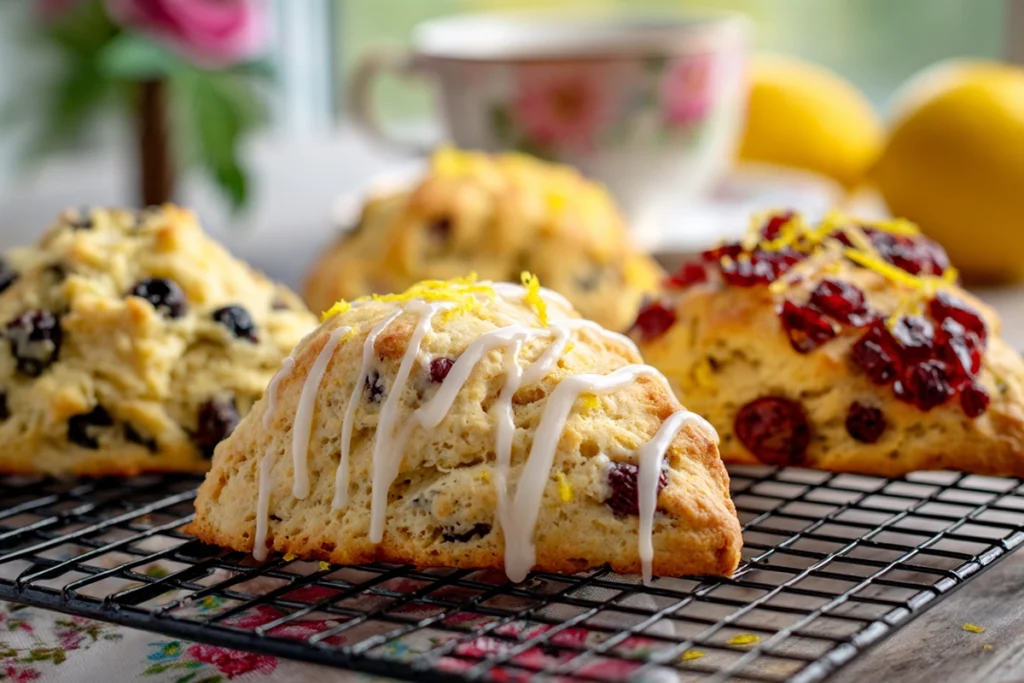
How to Serve Scones: Toppings, Spreads, and Pairings
Freshly baked scones are best served slightly warm. Here’s how to elevate them:
- With spreads: Clotted cream, whipped butter, fruit jam, honey
- With drinks: English breakfast tea, cappuccino, or fresh lemonade
- With meals: Serve savory scones alongside soups, salads, or scrambled eggs
You can also split them and use them as a base for a breakfast sandwich!
How to Create Your Own Signature Scone Flavor
Creating your scone flavor is fun and simple. Once you have mastered the basic dough recipe, you can add any ingredients you like. It’s all about balance—between sweet and savory, bold and subtle, moist and crumbly.
Step 1: Pick a Base Flavor Profile
Start by choosing whether you want a sweet or savory scone. Here are some ideas:
Sweet base flavor ideas:
- Vanilla bean
- Lemon zest
- Cinnamon or chai spice
- Almond extract
Savory base flavor ideas:
- Black pepper
- Herbs (like rosemary, thyme, or dill)
- Garlic powder
- Mustard seed
Step 2: Choose a Mix-In
Select 1 to 2 mix-ins to prevent your scone from becoming too heavy or wet.
Popular mix-ins for sweet scones:
- Berries (fresh or frozen)
- Dried fruits (cranberries, raisins, chopped apricots)
- Chocolate chips or chunks
- Chopped nuts (pecans, almonds)
For savory scones:
- Shredded cheese (cheddar, gruyère, parmesan)
- Cooked bacon or pancetta
- Caramelized onions
- Chopped olives or sun-dried tomatoes
Step 3: Add a Topping or Glaze
A topping can enhance the appearance and flavor of your scone. Some ideas:
- Sweet glaze: Mix powdered sugar and lemon juice or milk
- Savory finish: Sprinkle sea salt, cheese, or seeds before baking
- Crunchy top: Brush with cream and sprinkle with coarse sugar
Step 4: Bake and Test
Once your dough is mixed and shaped, bake a small test scone before committing to the full batch. This helps you check flavour, sweetness, and moisture.
Flavour Combo Inspiration
| Type | Combo Example | Notes |
|---|---|---|
| Sweet | Lemon + blueberry | Add zest to dough + berries folded in |
| Sweet | Chocolate + orange | Use chocolate chips + orange zest |
| Savory | Cheddar + chive | Classic brunch flavor |
| Savory | Bacon + maple | Sweet-salty combo, great with glaze |
Once you start customising, the combinations are endless. Please keep track of your favourite pairings so you can revisit and refine them over time.
Make-Ahead and Freezing Tips
Scones are very freezer-friendly, and that’s one reason they’re great for meal prep.
| Storage Method | Instructions | Shelf Life |
|---|---|---|
| Room temperature | Store in airtight container | Up to 2 days |
| Refrigerator | Keep wrapped or sealed | Up to 5 days |
| Freezer (baked) | Wrap tightly in foil or plastic | Up to 3 months |
| Freezer (unbaked) | Store in an airtight container | Add 3–5 mins bake time |
Always reheat in the oven or toaster oven—not the microwave—to preserve texture.
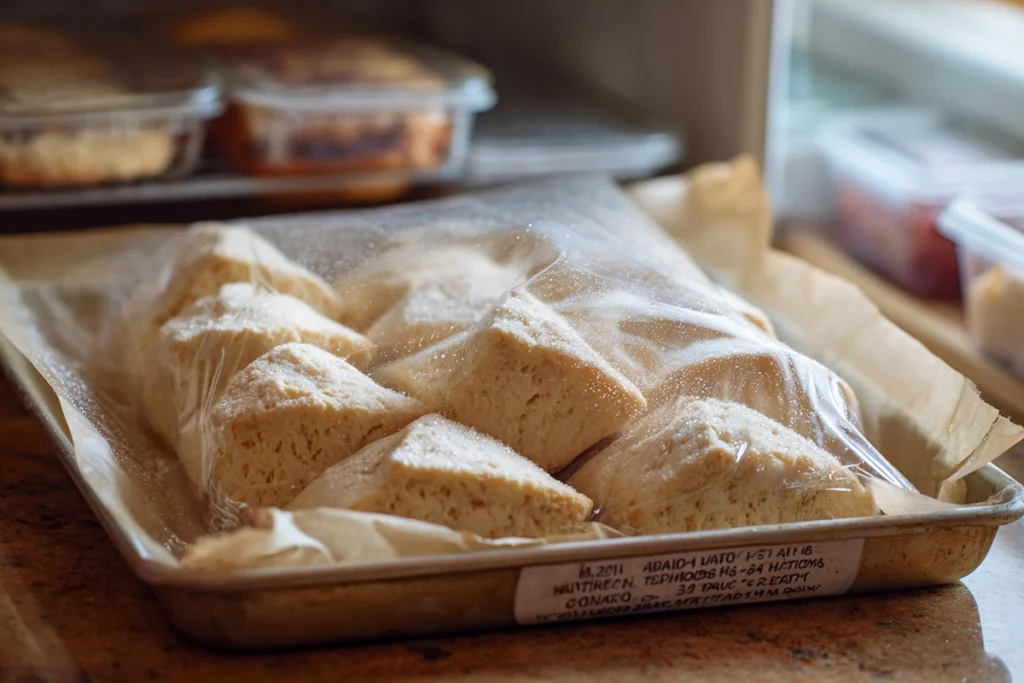
Are Scones Better with Cream, Buttermilk, or Milk?
Each liquid impacts your scones differently:
| Liquid | Texture Result | Flavor Profile |
|---|---|---|
| Buttermilk | Light, tangy, slightly moist | Mild tanginess adds depth |
| Heavy Cream | Rich, tender, slightly dense | More luxurious crumb |
| Milk | Light, less moist | Basic but still good |
Our favorite for balance: buttermilk, especially when paired with fresh fruit or spices.
Nutrition Breakdown: Are Scones a Healthy Treat?
While not exactly “diet food,” scones can be adjusted to fit your needs.
| Nutrient | Approx. per scone (basic recipe) |
|---|---|
| Calories | 280–320 kcal |
| Carbohydrates | 35–40 g |
| Fat | 12–15 g |
| Protein | 5–6 g |
| Sugar | 8–12 g |
Healthier tweaks:
- Use whole wheat flour for fibre
- Swap half the butter with Greek yogurt
- Reduce sugar and use unsweetened dried fruits
FAQ
What is the secret to making good scones?
The key is using very cold butter, not overworking the dough, and baking in a hot oven. This creates light, flaky layers in your scones.
Can I make scones without eggs?
Yes, eggs are optional in many scone recipes. You can omit them or replace with a splash of cream or buttermilk for moisture.
Why are my scones not rising properly?
Flat scones may be caused by old baking powder, overworked dough, or skipping the chill before baking. Always use fresh leavening and keep ingredients cold.
Can I use milk instead of cream in scones?
Yes, but cream or buttermilk gives scones a richer texture. If using milk, try whole milk for better results.
What’s the best way to store scones?
Keep scones in an airtight container at room temperature for 1–2 days. For longer storage, refrigerate or freeze them.
Can I freeze scone dough?
Yes! Shape the dough, freeze the unbaked wedges on a tray, then transfer to a bag. Bake from frozen, adding a few extra minutes to the time.
What flour is best for scones?
All-purpose flour works best for classic scones. Avoid bread flour as it makes them tough, and pastry flour may be too soft.
How do I make scones more moist?
Use heavy cream or buttermilk and avoid overbaking. Adding mix-ins like fresh fruit or yogurt can also help with moisture.
Should scones be crumbly or soft?
Properly baked scones should be crisp on the outside and soft and tender inside—not overly dry or overly wet.
Can I make gluten-free scones?
Yes, you can use a gluten-free all-purpose blend. Be sure to add a binding agent like xanthan gum if it’s not already included.
Get inspired with more mouthwatering recipes! Follow me on Facebook, Pinterest, and subscribe to YouTube for new cooking ideas every week.
Print
Scones
- Total Time: 33 minutes
- Yield: 8 scones 1x
- Diet: Vegetarian
Description
Classic American-style scones that are light, buttery, and slightly sweet—perfect for breakfast, brunch, or tea time. These scones are easy to make, freeze well, and can be customized with your favorite mix-ins, such as chocolate chips, blueberries, or savory herbs.
Ingredients
2 cups all-purpose flour
1/3 cup granulated sugar
1 tablespoon baking powder
1/2 teaspoon salt
1/2 cup cold butter, cubed
2/3 cup heavy cream or buttermilk
1 large egg (optional)
1 teaspoon vanilla extract
Optional mix-ins: chocolate chips, berries, cheese, herbs
Instructions
-
Preheat oven to 400°F and line a baking sheet with parchment paper.
-
In a large bowl, whisk flour, sugar, baking powder, and salt.
-
Cut in cold butter using a pastry cutter or fingers until the mixture resembles coarse crumbs.
-
In a separate bowl, whisk cream, vanilla, and egg (if using).
-
Gradually mix the wet ingredients into the dry ingredients until just combined.
-
Fold in any mix-ins gently.
-
Turn dough onto a floured surface, pat into a 1-inch-thick disc.
-
Cut into triangles or rounds and place on the baking sheet.
-
Brush tops with cream or egg wash.
-
Bake 15–18 minutes or until golden brown.
-
Cool slightly before serving.
Notes
Use cold butter for flakiness.
Don’t overwork the dough—it should remain slightly crumbly.
Freeze unbaked scones for later use and bake them directly from frozen, adding a few extra minutes to the baking time.
Great base for sweet or savory variations.
Glaze with lemon icing or sprinkle sugar on top for extra flavor.
- Prep Time: 15 minutes
- Cook Time: 18 minutes
- Category: Breakfast, Brunch, Baked Goods
- Method: Baking
- Cuisine: American
Nutrition
- Serving Size: 1 scone (1/8 of batch
- Calories: 300
- Sugar: 10 g
- Sodium: 200 mg
- Fat: 14 g
- Saturated Fat: 9 g
- Unsaturated Fat: 5 g
- Trans Fat: 0 g
- Carbohydrates: 38 g
- Fiber: 1 g
- Protein: 6 g
- Cholesterol: 45 mg
What Are Our Readers Saying?
There are no reviews yet. Be the first one to write one.

